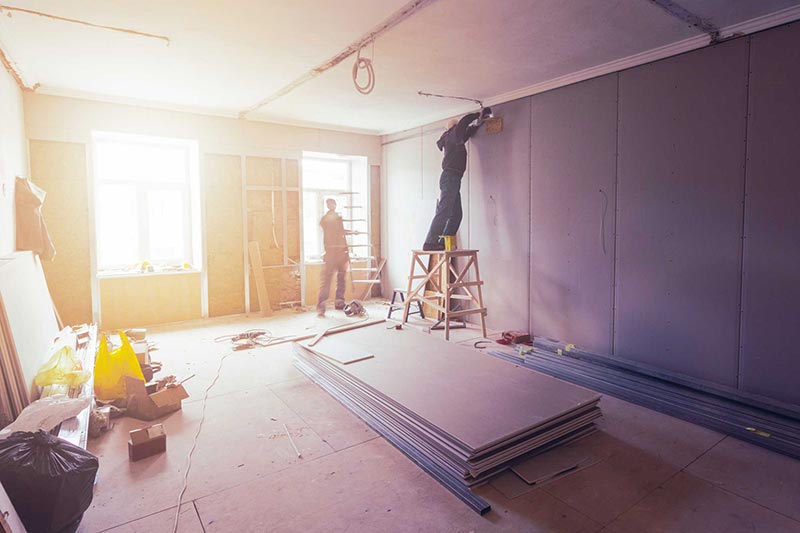
Mold Loves Your Kitchen and Bathrooms
If there’s one thing people don’t want in their kitchens and bathrooms it’s mold. While mold is necessary to make fine cheeses and penicillin, it’s not healthy for people to live intimately with—especially in areas of the home as sensitive as kitchens and bathrooms.
Mold can pose serious health concerns for infants, people with respiratory issues like asthma, but also healthy people who come into contact with toxic mold species, of which there are hundreds.
Prevent mold contamination in your home’s kitchen and bathrooms by following these simple steps from Professional Restoration.
How to Avoid Moisture in Your Home
Moisture is tricky to keep out of kitchens and bathrooms—these are, after all, places we typically need to use water in the home. These are also rooms most susceptible to water damage: busted pipes, overflows, and leaks are common accidents that lead to excessive moisture.
Even without water damage or an accident, excessive humidity (80 percent or more) can spur mold growth in unlikely places like carpeting, dry wall, and wood.
Avoid excessive and prolonged exposure to moisture by making sure ventilation or fan systems are functional and the appropriate size for the room’s dimensions.
A fan’s ability to move air is measured in cubic feet per minute (CFM). Check the CFM volume located on the label under the grill of all bathroom fans.
For small bathrooms (less than 50 square feet) 50 to 79 CFM will work fine. For larger bathrooms, you’ll want to calculate the square footage to ensure the fan’s CFM is at least equal to the square footage of the bathroom, or one CFM per square foot of bathroom space.
Other ways to minimize moisture in the home:
- Apply a waterproof seal to all tile and grout once a year
- Squeegee water off walls in shower after every use
- Run fans while taking a shower and for 30 minutes after
- Check kitchen and bathroom plumbing for leaks and mold growth annually
- Update home with mold-resistant products (details below)
- Direct water away from home foundation
- Clean and repair roof gutters annually
- Increase home circulation to minimize humidity; aim for less than 60 percent
Fight Mold with New Products
Moisture is almost always a catalyst for excessive mold growth, but sometimes humidity isn’t easy to control—especially if you live somewhere with lots of annual precipitation.
If you struggle to keep moisture levels low, or if you’re renovating a home that’s previously had water damage, there are several mold-resistant products available to help mitigate what you can’t control.
- Vapor barrier: unlike generic plastic liners, a quality vapor barrier won’t rip or tear during instillation in a crawl space. It will not only last for years, but can minimize future water damage repairs in the area. These barriers offer low permeability to block ground moisture and are especially useful in areas with high humidity.
- Mold-resistant paint: if you’re ready to upgrade a bathroom, kitchen, or laundry room, mold-resistant paint is a great upgrade well worth the extra cost. This product features anti-microbial properties that mitigate mold growth on just about any surface.
- Mold-resistant drywall: especially after water damage, consider upgrading traditional drywall, which has an organic paper facing that’s prone to mold, with mold-resistant drywall. There are two common types: homogeneous and fiberglass facing.
- Mold-resistant sealant: this product is ideal for sealing wood, OSB, concrete, stucco, brick, tile, drywall, and other surfaces. A mold-resistant sealant is blended with anti-microbial chemicals to mitigate fungal growth.
There’s no need to retrofit a home with minor mold issues, but it’s easier to clean and abate mold if you catch it early.
Got More Mold than You Can Handle?
In some cases, mold may spread beyond what you’re able to manage, and you’ll need to call the professionals for reinforcements. Unidentified toxic molds can lead to serious health problems if not properly cleaned and removed.
Professional Restoration’s mold remediation team is trained and certified by the Institute of Inspection Cleaning and Restoration Certification, an international organization that sets the standard for all remediation projects.
If you’ve got mold, Professional Restoration is here to help. Our local knowledge, experience, and specialized equipment will eliminate the problem from your property and your life. Quickly, efficiently and completely.
For more useful information on mold removal and home improvement, like Professional Restoration on Facebook or follow us on Twitter.

